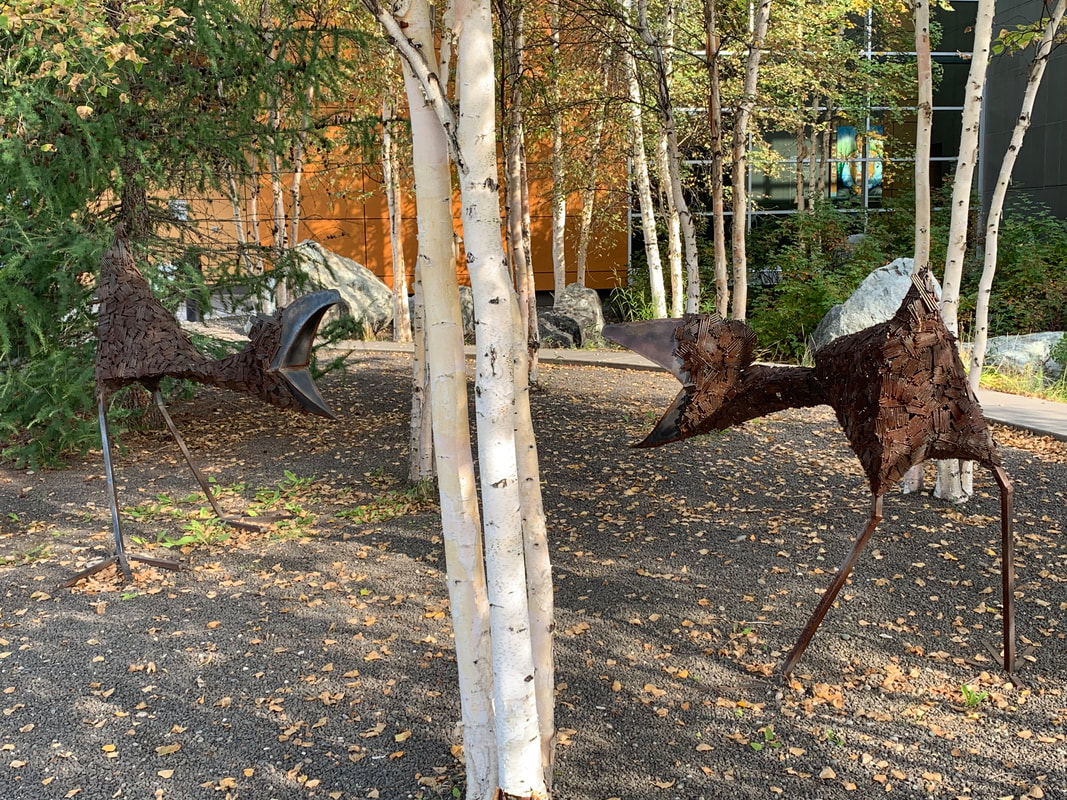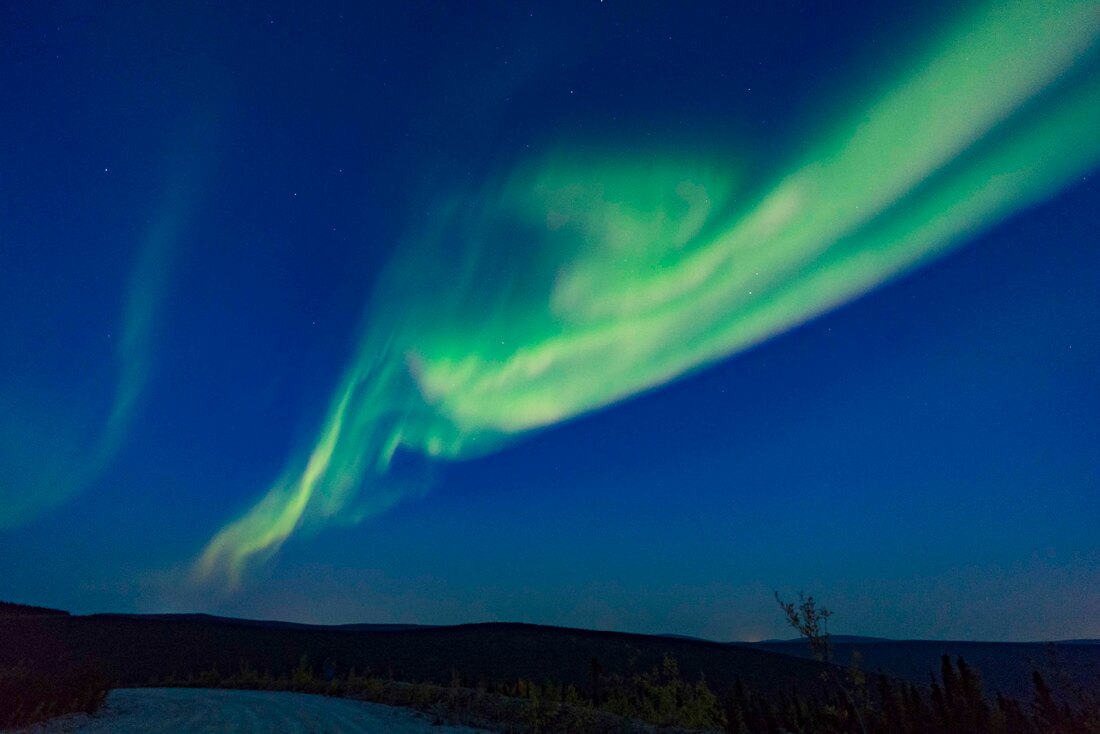|
Our trip got off to a fast start after our initial group meeting in Fairbanks with the outfitter. It was a simple question that got us going. Would we get a chance to see the Aurora Borealis? It turns out everyone in Alaska is a fan of the Northern Lights and there are several resources online to tell you how likely they are to appear on any given night. It was a clear evening with a positive forecast so our guide offered to drive us north of Fairbanks into the woods to see the Northern Lights and the Alaska Pipeline. As a Fairbanks native whose husband worked for the pipeline company, she knew a good place to see the Pipeline and some good locales for viewing the night sky. After dinner we headed out. Our first stop was the Pipeline. It got cool as the day ended but not something a sweater and light coat could not handle. It has been unseasonably hot in Alaska again this year pushing back and shortening the cold season. For years now, global warming has been warming and reducing the permafrost that covers most of the State. The consequences of a melting permafrost are a major concern for Alaska's 740,000 residents. As we took in the enormity of the Pipeline. Forty-eight inches wide and more than 800 miles long, the Pipeline carries millions of gallons of oil each year from Prudhoe Bay in the north to Valdez, Alaska, on the southern coast. At it's peak, the Pipeline moved 2.1 million gallons of oil per day, down to less than 500 thousand gallons in 2018. Once the oil stops flowing, it will be removed and many jobs will be lost, an economic reality many Alaskan's fear. As night arrived, we piled into our van and drove further north of Fairbanks, leaving a paved highway and driving into the woods on gravel roads. We headed toward a cell tower first, interrupting who-knows-what in a sedan parked along the side of the road. The vista was not clear from that point, so our guide drove further until we came upon this clear stretch in the road. Even though it was still relatively soon after sunset, the Northern Lights were on full display. You can see it above but what you cannot see is its movement or it stretching behind the top of the photograph all the way to the opposite horizon. It filled the sky with color and movement. As the sky darkened, the lights seemed to get brighter or, at least, more distinct. We did not hear any sound from the Borealis. Many natives claim to be able to hear as well as see the Northern Lights, a claim disputed by many. Recent research, however, seems to validate the claims of those who hear sounds with the Aurora Borealis by noting clapping sounds generated as low as 70 feet above ground level. Since the constant and unpredictable movement of the lights as much as the lights and colors themselves are what make this phenomena so interesting to experience, we end this posting with five consecutive shots of the Northern Lights taken in quick succession that evening. Scroll through them quickly to get an idea of just how much these celestial lights dance through the sky. Next week, back to Denali National Park, a Wonder Lake, pink morning, big antlers, rutting moose and more. ~ ~ ~ ~
The first image above is entitled Baby Ravens and sits outside a museum in Fairbanks. All photos and text are copyright Clinton Richardson. If you like these posts, please tell your friends about the Venture Moola blog at Readjanus.com. More of our images can be found on our companion website at trekpic.com. Feel free to share this blog with your friends. The more readers the better. Click here if you would like to get a weekly email that notifies you when we release new entries. Or, click in the side column to follow us on Facebook or Twitter. The venture moola blog comes to you from Atlanta, Georgia. Find it at readjanus.com. Copyright Clinton Richardson.
Comments are closed.
|
the blog
Travel, history, and business with original photos.
your hostClinton Richardson - author, photographer, business advisor, traveler. Categories
All
Archives
July 2023
Follow us on Facebook
|
Check out Ancient Selfies a 2017 International Book Awards Finalist in History and 2018 eLit Awards Gold Medal Winner and
Passports in his Underpants - A Planet Friendly Photo Safari a 2020 Readers' Favorite Winner in Nonfiction
Site Copyright 2024 by Clinton Richardson








 RSS Feed
RSS Feed